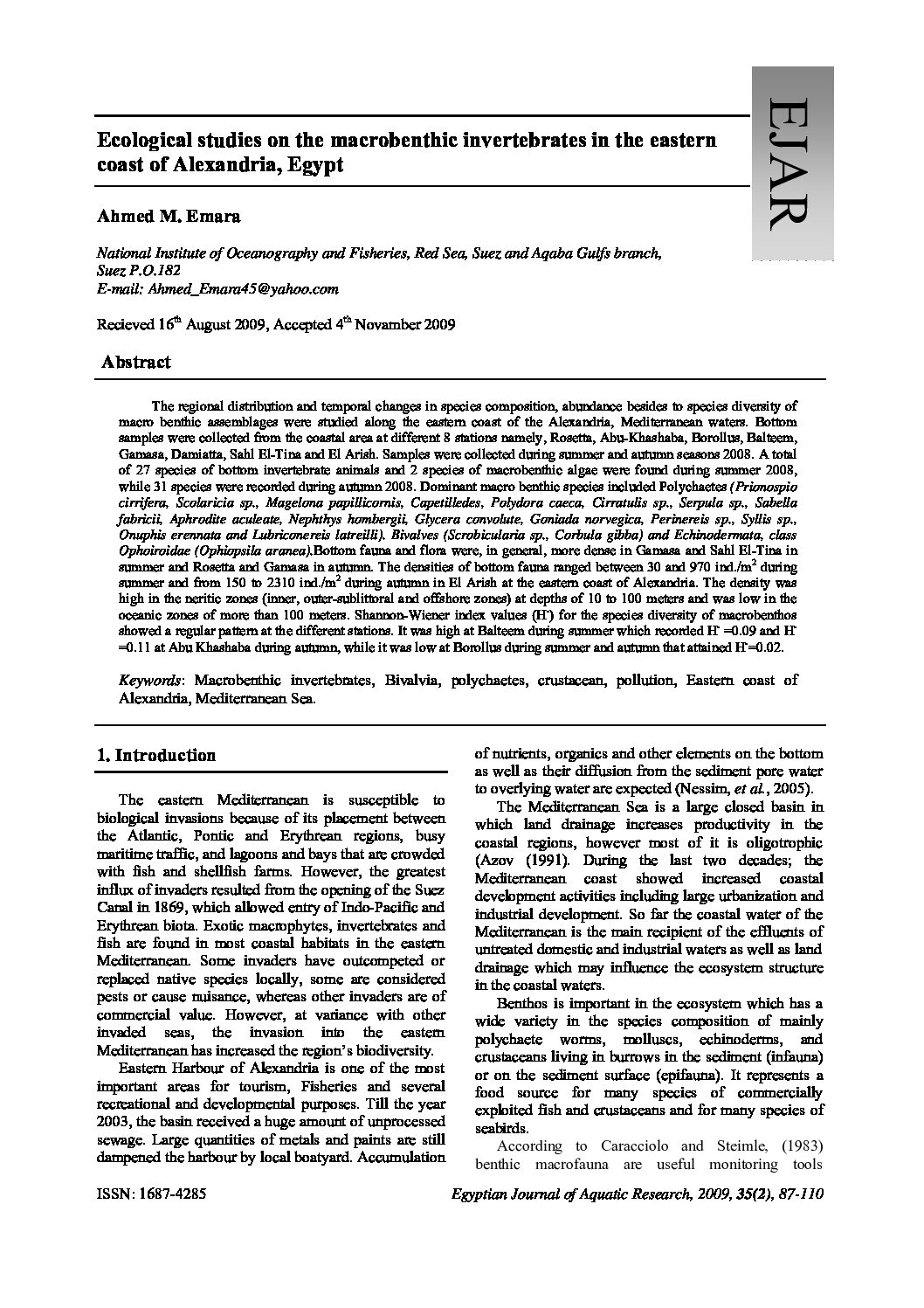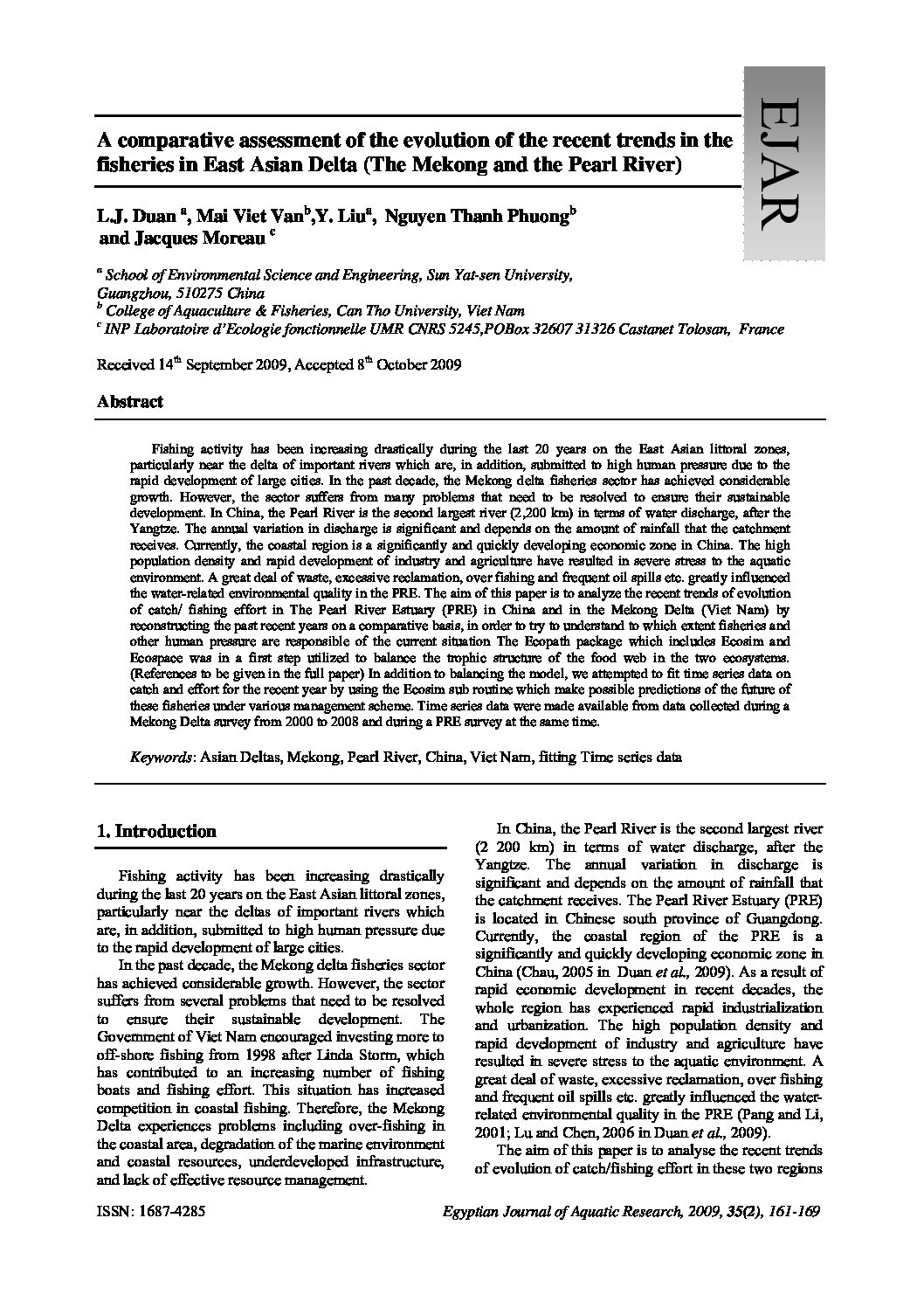Categories
vol-35Ecological studies on the macrobenthic invertebrates in the eastern
coast of Alexandria, Egypt
Ahmed M. Emara
National Institute of Oceanography and Fisheries, Red Sea, Suez and Aqaba Gulfs branch,
Suez P.O.182
E-mail: [email protected]
Recieved 16th August 2009, Accepted 4th Novamber 2009
Abstract
The regional distribution and temporal changes in species composition, abundance besides to species diversity of
macro benthic assemblages were studied along the eastern coast of the Alexandria, Mediterranean waters. Bottom
samples were collected from the coastal area at different 8 stations namely, Rosetta, Abu-Khashaba, Borollus, Balteem,
Gamasa, Damiatta, Sahl El-Tina and El Arish. Samples were collected during summer and autumn seasons 2008. A total
of 27 species of bottom invertebrate animals and 2 species of macrobenthic algae were found during summer 2008,
while 31 species were recorded during autumn 2008. Dominant macro benthic species included Polychaetes (Prionospio
cirrifera, Scolaricia sp., Magelona papillicornis, Capetilledes, Polydora caeca, Cirratulis sp., Serpula sp., Sabella
fabricii, Aphrodite aculeate, Nephthys hombergii, Glycera convolute, Goniada norvegica, Perinereis sp., Syllis sp.,
Onuphis erennata and Lubriconereis latreilli). Bivalves (Scrobicularia sp., Corbula gibba) and Echinodermata, class
Ophoiroidae (Ophiopsila aranea).Bottom fauna and flora were, in general, more dense in Gamasa and Sahl El-Tina in
summer and Rosetta and Gamasa in autumn. The densities of bottom fauna ranged between 30 and 970 ind./m2
during
summer and from 150 to 2310 ind./m2
during autumn in El Arish at the eastern coast of Alexandria. The density was
high in the neritic zones (inner, outer-sublittoral and offshore zones) at depths of 10 to 100 meters and was low in the
oceanic zones of more than 100 meters. Shannon-Wiener index values (H-
) for the species diversity of macrobenthos
showed a regular pattern at the different stations. It was high at Balteem during summer which recorded H-
=0.09 and H-
=0.11 at Abu Khashaba during autumn, while it was low at Borollus during summer and autumn that attained H-
=0.02.
Keywords: Macrobenthic invertebrates, Bivalvia, polychaetes, crustacean, pollution, Eastern coast of
Alexandria, Mediterranean Sea.







